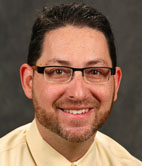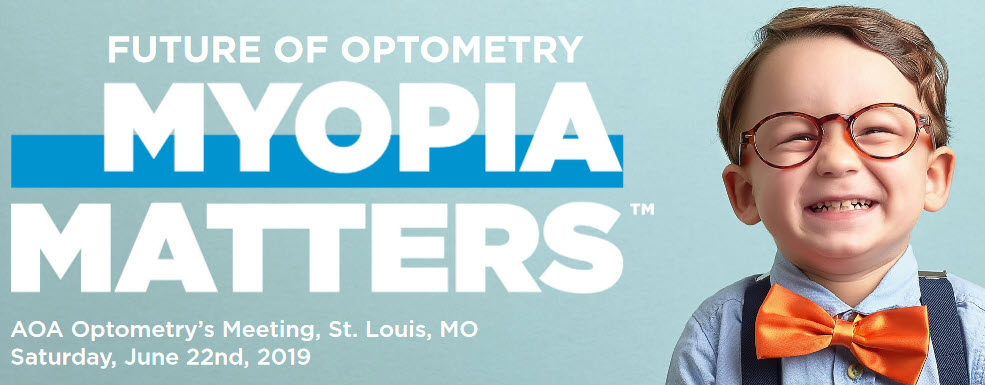By Paul Levine, OD, FIAOMC, FAAO
Oct. 30, 2019
As the myopia epidemic continues to afflict billions of people across the globe, myopia management is a growing opportunity and under-served necessity to fulfill.
With a rapidly increasing number of patients who could benefit from limiting the development or progression of myopia, these are essential services to add to your practice. Here is a discussion of the office processes needed before launching myopia management care.
I have been actively managing myopia progression for over 15 years. Whether it be through the use of orthokeratology, bifocal contact lenses, atropine, bifocal spectacles, low-plus reading glasses, or recommendations for vision therapy, I have always prescribed with a therapeutic approach toward myopia.
Educating yourself and your patients to the options available may take time, but the reward is seen in every patient encounter. When you can positively affect a child’s future and actively manage your patients to give them the best service they can get, the amount of personal and professional satisfaction is second to none!
Purchase the Proper Equipment
To be successful in myopia management, certain pieces of equipment are imperative for your success. To provide orthokeratology for instance, a robust corneal topographer is the single most important piece of equipment you need. Additionally, anterior segment photography or videography will aid greatly in troubleshooting malpositioned lenses.
Axial length measuring tools will become standard-of-care in myopia management. Doctors fully engaged in this specialty have already embraced this technology, and newer machines are entering the marketplace at a rapid rate.
Other contact lens-related pieces of equipment are typically in most offices already, so just the soft goods such as starter kits, wratten filters, written educational materials, DMV removers, etc., should be maintained and in stock at all times.
Create Educational Materials
It is important to have written materials that can be given to patients and parents about myopia management strategies. When the exam concludes, a discussion should be had about the options available. Though these have the potential of being long conversations that most busy offices cannot accommodate, there is a way to briefly describe the problems and possible solutions and options.
Written documentation dispensed at the end of the visit is critical to guide the understanding and expectations of patients and parents. Scheduling regular follow-up visits is important. Follow-ups also allow for more time to discuss and decide on best options and treatments.
A red flag that you don’t have proper patient education in place is when patients do not understand insurance coverage (more specifically, lack thereof) for myopia management. Myopia can increase rapidly in children, so the importance of more than simple annual exams and follow-up care needs to be explained to decrease patient confusion and frustration. You know you have failed in educating your patient when they are confused, or worse, express anger when they are presented with non-covered fees at the end of their visit.
Myopia Epidemic: Action Plan
By Ryan Parker
Director of Professional Development
Essilor of America
Since Essilor launched its Myopia Matters campaign earlier this year, I have been working on two goals: First, raising awareness among eye care professionals (ECPs) about the importance of treating myopia early to avoid eye health issues later in life. And second, making educational resources available to help practitioners improve their myopia management skills.
<<Click HERE to read more about what Essilor is doing to help ODs aid the myopia epidemic>>
Get Staff Buy-In Before Adding Processes
Adding myopia management processes requires full staff buy-in. Take the time to train staff so that there is a united front, with everyone saying the same things and teaching patients in the same way. Patients put their trust in the doctor, but equally as important is the staff. Spend some time listening to your staff and how they talk to patients, how they answer questions, and what they say.
When you hear things that are wrong or inconsistent, be sure to remedy the situation swiftly, and have frequent staff meetings. Also consider sending staff to continuing education and training. Vision by Design offers a staff track for myopia management and Ortho-K training, for instance.
Staff training is vital as non-medical personnel will be asked questions and need to align with the doctors in the answers and treatment recommendations. A system of follow-up care is also important as many of these patients will need more than one annual evaluation as stated above.
Garner High Praise for Patients & Referrals
The biggest gain to having effective processes in place is that the office appears fully prepared and adept at managing myopia. From initial phone call to checking out after the appointment, expertise in the field of myopia management must be projected.
Other Articles to Explore
The number one marker of a successful patient experience is word-of-mouth referrals. This is a great indication that the services received are appreciated and respected so much that friends and families are urged to come in. Professional referrals are also a great indication that your work and expertise in the area of myopia management are respected and effective.
Looking at reviews and patient surveys are also a great way of understanding patients’ satisfaction (or dissatisfaction) with your all of services, including myopia management.
When you offer specialized services not found at many other offices, there will be a tremendous growth opportunity for you and your practice. Make sure you have done your homework, and remember, these are premium services that fall outside the scope of “routine,” so please set your fees accordingly.
 Paul Levine, OD, FIAOMC, FAAO, is co-founder of Vision Care Specialists in in Southborough, Mass. He is also president of the board of directors of the American Academy of Orthokeratology and Myopia Control. To contact him: drpaul@greatvisioncare.com
Paul Levine, OD, FIAOMC, FAAO, is co-founder of Vision Care Specialists in in Southborough, Mass. He is also president of the board of directors of the American Academy of Orthokeratology and Myopia Control. To contact him: drpaul@greatvisioncare.com



























